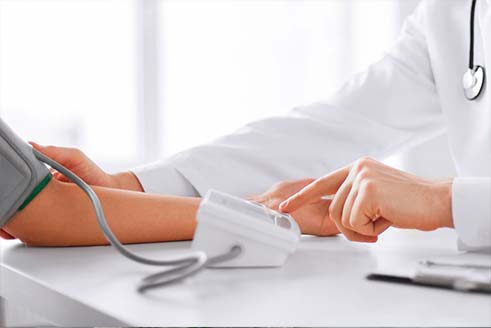During pregnancy, blood pressure is monitored more closely, as its possible fluctuations can have a direct impact on fetal development. However, blood pressure can sometimes decrease as a result of fatigue or other intrinsic causes, causing low blood pressure during pregnancy.
Therefore, throughout this article, you will learn more about low blood pressure during pregnancy. Follow along to learn more about the subject right now!
Firstly, what is hypotension?

We talk about hypotension when the pressure exerted by the blood on the artery wall is lower than normal. We speak of hypotension when the maximum (first digit of blood pressure) is less than 9 mm Hg in adults.
So this is the exact opposite of high blood pressure. This phenomenon can appear from time to time at any age in life. In most cases, the cause is unknown and the hypotension crisis does not pose a health threat.
However, if low blood pressure is not a disease in itself, it can be the manifestation of several pathologies, such as heart failure or adrenal gland failure.
However, there are many other possible causes, such as dehydration, use of certain medications (antidepressants, diuretics in particular), alcohol consumption or even very significant weight loss.
Why does blood pressure drop during pregnancy?
During the first trimester, blood pressure tends to naturally decrease in pregnant women.
In fact, the circulatory system is entirely directed towards the placenta and the fetus, while significant hormonal changes at this stage cause dilation of the arteries and veins. Results: voltage drops slightly.
This may explain the lightheaded or dizzy feeling that pregnant women may experience. But as soon as the second trimester begins, tension should return to a normal state.
It will not undergo further changes until the beginning of the third quarter, during which cases of low blood pressure during pregnancy are usually revealed.
How to detect low blood pressure during pregnancy?
A drop in blood pressure is often accompanied by many symptoms, the importance of which may vary between women:
- Headache
- Increased fatigue,
- Cold sweats,
- Hearing buzzing,
- Vision disorders,
- Paleness of the face,
- A lower heart rate.
If you experience these clinical signs, you should lie down with your legs raised so that they are higher than the rest of your body.
This position facilitates blood flow to the brain and more quickly restores normal blood pressure. Normally, this type of precaution is sufficient to resolve a specific voltage drop.
Focus on orthostatic hypotension
We talk about orthostatic hypotension when the drop in blood pressure is caused by a certain posture. This phenomenon reveals an abnormality in the reflex, allowing blood pressure to adapt to changes in position.
This specific type of hypotension is usually seen when a person moves very abruptly from a lying position to a standing position or after sitting for a long time.
While many individuals can be affected by this disorder, orthostatic hypotension also affects pregnant women whose blood pressure is already weakened by various hormonal changes.
Therefore, it is advisable to avoid positions that promote blood stagnation in the lower limbs, impairing cerebral irrigation.
What about hypertension during pregnancy?
Pressure monitoring also aims to monitor a possible increase in voltage. We talk about hypertension when the pregnant woman exceeds the 14/9 measurement.
Almost 10% of pregnant women would experience this phenomenon. These include pregnant women who suffered from high blood pressure before pregnancy and those who have symptoms of pre-eclampsia.
In all cases, high blood pressure during pregnancy usually requires hospitalization to check whether the fetus is doing well. While most women can go home with recommendations to rest, some should be monitored more closely.
What is preeclampsia?
Characterized by an increase in blood pressure and the presence of proteins in the urine, pre-eclampsia is an obstetric pathology that must be taken seriously, as its consequences can be significant for the mother and baby.
In short, it can occur after twenty weeks of amenorrhea and persist six weeks after birth.
The diagnosis of pre-eclampsia necessarily requires medical care for the expectant mother in a hospital setting.
In fact, this pregnancy disease can lead to serious complications: convulsions, cerebral hemorrhage, kidney failure, placental abruption…
The only effective treatment against pre-eclampsia is childbirth! But when hypertension starts very early, a therapeutic strategy must be put in place to delay childbirth.
It generally remains stable for the first three months, decreases in the second trimester and returns to normal in the third. These variations are due to the body's natural adaptation mechanisms to pregnancy.
In fact, normally, a healthy adult's systolic pressure (the top number) is between 100 and 140 and diastolic pressure is between 70 and 95 mmHg.
A drop in blood pressure during pregnancy is normal. This because:
- Pregnancy hormones weaken blood vessels.
- Furthermore, the heart is more stressed and a lot of blood circulates in the body. Much of this blood is destined for the placenta.

